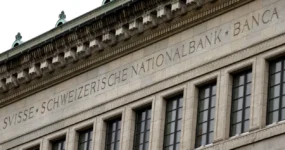- The PCE price index, a measure the Fed focuses on to measure the cost of goods and services in the U.S. economy, rose 0.1% for the month, putting the 12-month inflation rate at 2.2%.
- Excluding food and energy, core PCE rose 0.1% in August and was up 2.7% from a year ago.
- The all-items inflation gauge was below Wall Street estimates and the lowest since early 2021.
Inflation moved closer to the Federal Reserve’s target in August, easing the way for future interest rate cuts, the Commerce Department reported Friday.
The personal consumption expenditures price index, a gauge the Fed focuses on to measure the cost of goods and services in the U.S. economy, rose 0.1% for the month, putting the 12-month inflation rate at 2.2%, down from 2.5% in July and the lowest since February 2021. The Fed targets inflation at 2% annually.
Economists surveyed by Dow Jones had been expecting all-items PCE to rise 0.1% on the month and 2.3% from a year ago.
Excluding food and energy, core PCE rose 0.1% in August and was up 2.7% from a year ago, the 12-month number 0.1 percentage point higher than July. Fed officials tend to focus more on core as a better measure of long-run trends. The respective forecasts were for 0.2% and 2.7% on core.
“All quiet on the inflation front,” said Chris Larkin, managing director of trading and investing at E-Trade from Morgan Stanley. “Add today’s PCE Price Index to the list of economic data landing in a sweet spot. Inflation continues to keep its head down, and while economic growth may be slowing, there’s no indication it’s falling off a cliff.”
Though the inflation numbers indicated continued progress, the personal spending and income numbers both came in light.
Personal income increased 0.2% on the month while spending rose 0.2%. The respective estimates were for increases of 0.4% and 0.3%.
Stock market futures were positive following the report while Treasury yields were negative.
The readings come a little more than a week after the Fed took down its benchmark overnight borrowing rate by half a percentage point to a target range of 4.75%-5%.
The progress in August came despite continued pressure from housing-related costs, which increased 0.5% on the month for the largest move since January. Services prices overall rose 0.2% while goods declined by 0.2%.
It was the first time the central bank had eased since March 2020 in the early days of the Covid pandemic and was an unusually large action for a Fed that prefers to move rates in quarter-point increments.
In recent days, Fed officials have switched their focus from inflation fighting to an emphasis on supporting a labor market that has shown some signs of softening. At their meeting last week, policymakers indicated a likelihood of another half percentage point in cuts this year then a full point in reductions for 2025, though markets expect a more aggressive path.


